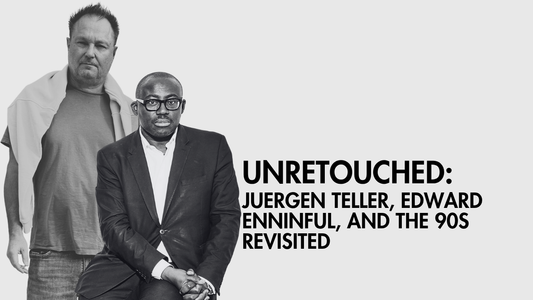
Will AI Ever Replace the Artistry of Manolo Blahnik?
Share
As artificial intelligence advances across the creative industries, a pressing question emerges: could AI ever replace the likes of Manolo Blahnik and his iconic shoe illustrations? More importantly, how might AI enhance his process, or conversely, strip away the magic of his artistry?

Blahnik’s drawings are not simply technical sketches to guide production; they are artworks that breathe life into footwear long before leather meets last. With coloured markers and pencils, he conjures shoes that feel alive — heels that glimmer with seduction, straps that float like ribbons of poetry, and lines that balance elegance with whimsy. The vibrancy of his colour palette and the looseness of his hand bring a sensuality to the page that no software can truly mimic.

Some of his most celebrated works include his feathered sandals and jewel-toned stilettos, rendered with a delicacy that makes them feel both divine and wearable. Each piece radiates imagination: not just a product to be worn, but a dream to be lived. In his drawings, the boundary between fashion and art disappears, leaving only the impression of beauty.

By contrast, many fashion schools and universities now lean heavily on 3D software such as Clo3D or CAD modelling tools to teach design. These platforms are undoubtedly powerful, enabling students to visualise garments and accessories quickly, experiment with materials, and simulate movement in real time. They streamline workflows and reflect how many brands prototype collections today. But the danger lies in bypassing the artistry of drawing, where intuition, emotion, and storytelling take centre stage.

Manolo Blahnik’s craft underscores why drawing is irreplaceable. His illustrations are not about perfection or precision but about feeling — the pressure of a pencil that shifts to suggest softness, or a vibrant wash of marker ink that captures the shimmer of satin. They are deeply human gestures, filled with spontaneity, mistakes, and moments of brilliance that no software can script. To understand fashion through drawing is to understand design at its soul: a dialogue between hand, eye, and imagination.
Yet a younger generation of fashion illustrators is beginning to show that tradition and technology need not be at odds. Many artists now sketch on iPads using Procreate or digital styluses, blending the immediacy of hand-drawn lines with the flexibility of digital tools. Some even mimic Blahnik’s use of coloured markers and pencils in digital brushes, capturing that same sense of vibrancy and gesture while adding layers, textures, and effects that can only be achieved digitally. For these artists, AI and digital platforms are not replacements but companions — tools that expand the possibilities of drawing while keeping the heart of illustration intact.

This new wave reflects an evolving language of fashion illustration, where the hand and the screen work together. By embracing both, they ensure that Blahnik’s legacy of expressive artistry continues, even as the tools of the trade evolve.
AI may one day complement this process further, assisting designers in exploring colourways or refining proportions. Universities might blend drawing with digital tools, ensuring students can adapt to industry needs while maintaining their artistic roots. But if illustration is neglected in favour of screens and simulations, what is lost is not just a skill but a language — the language of visual poetry that Blahnik exemplifies.

His illustrations, now collected by museums and studied as fine art, remind us that the heart of fashion is not just commerce or production but creativity itself. While AI and 3D software may redefine the tools of design, they cannot replicate the divine artistry of Manolo Blahnik — an artistry that turns shoes into living dreams on paper.
In the age of algorithms, his work is a powerful reminder that human imagination, expressed through the humble act of drawing, remains fashion’s most essential technology.
Link to Manolo Blahnik
https://thearchives.manoloblahnik.com/experience/thecraft



